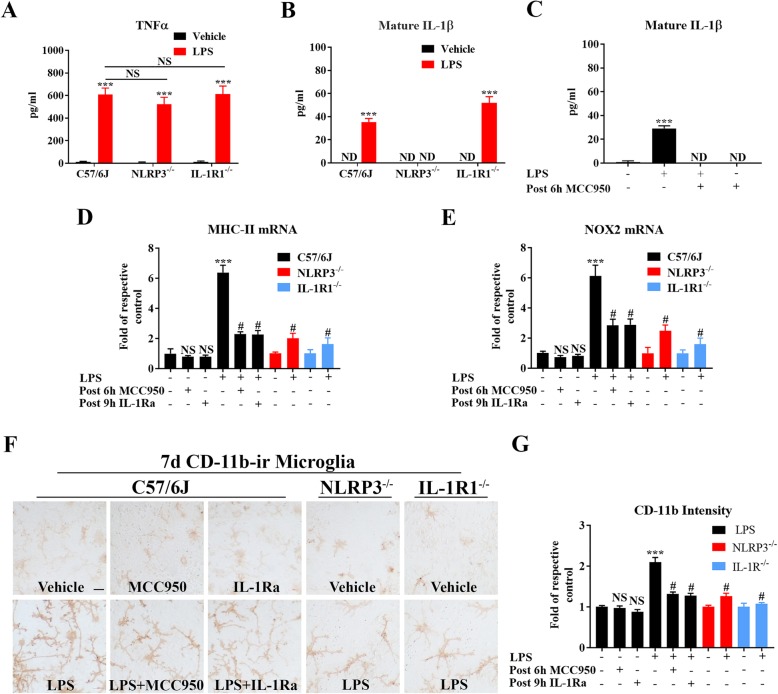Fig. 4.
Genetic or pharmacological inhibition of NLRP3 or IL-1R1 represses LPS-elicited production of chronic inflammatory mediators in neuron-glial cultures. Neuron-glial cultures prepared from WT, NLRP3−/−, and IL-1R1−/− mice were treated with LPS (20 ng/ml) or vehicle medium. Data were from three independent experiments. After LPS treatment, supernatant levels of 4 h TNFα (a), 24 h mature IL-1β (b), and 24 h mature IL-1β with post 6 h addition of MCC950 at 10 μM (c) were detected by ELISA. ***p < 0.001 compared with respective vehicle medium group and NS among LPS groups. Two-way ANOVA followed by Bonferroni post hoc multiple comparison test for (a, b). One-way ANOVA followed by Bonferroni post hoc multiple comparison test for (c). At 4 days after LPS, mRNA levels of MHC-II (d) and NOX2 (e) were measured by qPCR. MCC950 (10 μM) or IL-1Ra (0.5 μg/ml) was post-added to WT neuron-glial cultures at 6 h and 9 h. ND not detectable. At 7 days after LPS and post-treatment of MCC950 or IL-1Ra, representative images of microglial CD-11b (the α-chain of Mac1, indicating Mac1 expression here) immunostaining (f) and the intensity of CD-11b (g) measured by ImageJ were shown. Bar = 50 μm. d–g NS, #p < 0.001 compared with WT vehicle group, and ***p < 0.001 compared with WT LPS group. Two-way ANOVA followed by Bonferroni post hoc multiple comparison test

